The approach taken by Toyota towards sustainable motoring has historically been one centred upon hybrid vehicles, with relatively modest headway made in terms of battery-electric vehicles – until the advent of the bZ4X, that is. Now, Toyota has released more details on the fully electric crossover.
Set for worldwide debut in mid-2022, the bZ4X will be the first of the bZ series of models which aims to “emphasise safety and peace of mind”, says Toyota.
The bZ4X is based on a dedicated battery-electric platform – a Toyota first – that has been jointly developed with Subaru, with the objectives of a low centre of gravity and greater rigidity. The vehicle also has to be a “spacious, quiet and relaxing space in any seat,” and to that end Toyota has given the bZ4X a wide cabin with a tandem distance of 1,000 mm, or equivalent of a D-segment sedan, says Toyota.
The bZ4X will, in some versions get steering-by-wire and a uniquely shaped steering wheel, a Toyota first, somewhat like an aircraft steering yoke. This will get a very direct steering ratio that will need just 150 degrees of steering lock-to-lock.
Toyota says steering feel is improved by independently controlling the steering torque felt by the driver, and its characteristics can be adjusted through drive mode selection. In effect, the one-motion grip steering yields more legroom and better freedom for entry and exit.
Measuring 4,690 mm long, 1,860 mm wide 1,650 mm tall with a wheelbase of 2,850 mm, the bZ4X weighs 1,920 kg in FWD guise and 2,005 kg as an AWD.
The joint development of the bZ4X also brings the adoption of X-Mode, a drive mode employed in all-wheel-drive Subaru models in order to maximise drive and traction in slippery surfaces. This is in addition to Grip-Control, a new feature within X-Mode that aids performance across all surfaces.
The bZ4X will be available in front-wheel-drive and all-wheel-drive configurations. Both pack a 71.4 kWh lithium-ion battery operating at 355 V, with support for AC charging at up to 6.6 kW and DC charging at up to 150 kW. The single-motor FWD outputs 150 kW (204 PS) to the front wheels, while the AWD outputs 109 PS for each of the front and rear axles for a total of 218 PS).

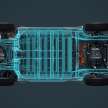
The FWD version does the 0-100 km/h sprint in 8.4 seconds, while the mildly more powerful AWD version does the same in 7.7 seconds. Front suspension employs coil spring struts in front while the rear gets double wishbones and ventilated brakes all around.
Toyota has placed particular emphasis on collision safety and battery safety in the bZ4X. For collision safety, the BZ4X gets an omni-directional crash response structure for the protection of occupants, batteries and the other vehicle involved in the collision.
Here, the battery unit compartment features cross-members that connect the left and right sides of the vehicle on order to improve crash energy absorption. Two cross-members are located in the front of the vehicle to reduce damage inflicted upon the other vehicle in the event of a crash, with a strong framework at the front of the cabin for a full under-floor mounting of the car’s battery pack.
These result in a structure that distributes the input load of collision forces over multiple routes, in order to stabilise and protect the cabin and battery pack in frontal and side collisions, says Toyota.
For battery safety, Toyota endeavours to ensure that the battery production process is free of contamination, which is a cause of abnormal battery heating. Further measures include redundant monitoring of battery voltage, current and temperature in order to detect signs and occurence of abnormal temperature gains to prevent overheating.
To this end, further safeguards include the use of high-resistance coolant that will prevent fires from short circuits even if there its leakage of the battery’s liquid coolant. Additionally, the battery pack itself is integrated with the vehicle body for greater protection in the event of a collision.
Beyond powering the vehicle itself, the bZ4X features a DC external power supply function to provide high-output electricity for outdoor activities, as well as to homes and their applicances in the event of natural disasters and emergencies. This can also be used in the reverse with homes that have solar power generation, where surplus solar-generated electricity in the daytime can be used to recharge the bZ4X.
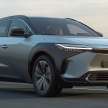

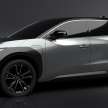
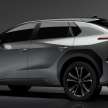
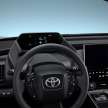
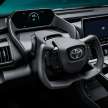
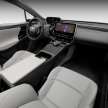
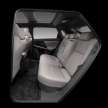
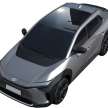
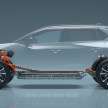
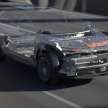
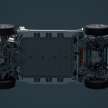


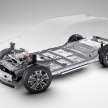
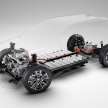

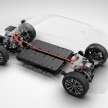

The post Toyota bZ4X EV – up to 500 km range, co-developed with Subaru, with X-Mode AWD; to debut mid-2022 appeared first on Paul Tan's Automotive News.

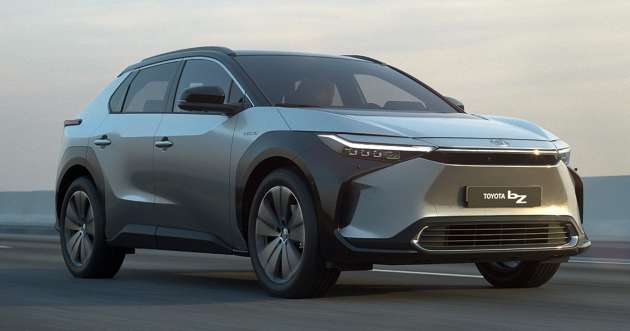
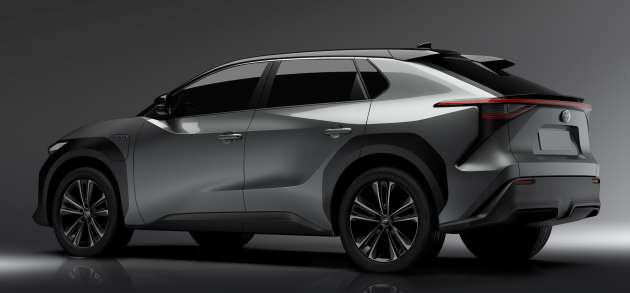
0 Comments